Weekly Current Affairs (22nd to 31st December 2024) Part - 1 | Current Affairs & Hindu Analysis: Daily, Weekly & Monthly - UPSC PDF Download
18th India State of Forest Report 2023
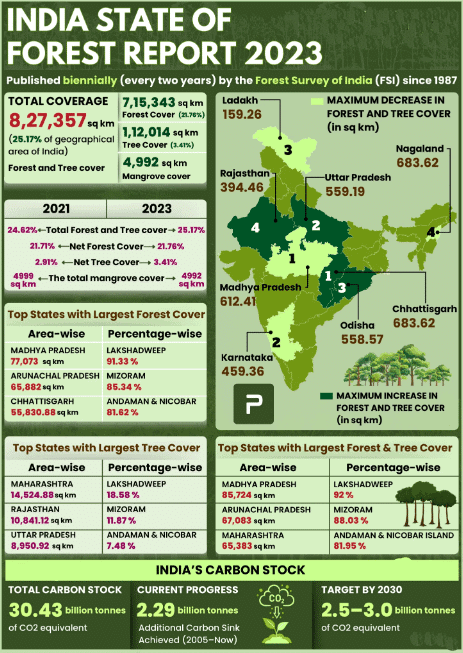
Why in News?
- Recently, the Ministry for Environment, Forest and Climate Change released the 2023 (ISFR 2023). The ISFR is published by the Forest Survey of India (FSI) on a biennial basis since 1987.
Key Takeaways
- The total forest and tree cover of India is approximately 827,356.95 km², which constitutes 25.17% of the country's geographical area.
- Forest cover alone accounts for 715,342.61 km² (21.76%), while tree cover adds 112,014.34 km² (3.41%).
- There has been an increase of 1,445.81 km² in forest and tree cover since 2021, with a 156.41 km² rise in forest cover.
- Chhattisgarh saw the maximum increase in forest and tree cover by 684 km², followed by Uttar Pradesh and Odisha (both 559 km²).
- Madhya Pradesh experienced the largest decrease in forest cover, losing 612.41 km².
Additional Details
- Carbon Stock: The total carbon stock is estimated at 7,285.5 million tonnes, with a notable increase of 81.5 million tonnes. The top contributors include Arunachal Pradesh (1,021 Mt), Madhya Pradesh (608 Mt), and Chhattisgarh (505 Mt).
- The carbon stock of India has reached 30.43 billion tonnes of CO2 equivalent, exceeding the 2005 baseline by 2.29 billion tonnes.
- Mangrove Cover: The mangrove cover is 4,991.68 km², representing 0.15% of the total geographical area, with a net decrease of 7.43 km² since 2021.
- The top three states with the most fire incidents in the 2023-24 season are Uttarakhand, Odisha, and Chhattisgarh.
In conclusion, the ISFR 2023 highlights positive trends in forest and tree cover, carbon stock, and soil health while also addressing challenges such as forest fires and loss of mangroves. India's commitment to global climate goals, such as the Paris Agreement and Bonn Challenge, reinforces its ongoing conservation efforts.
Mains Question:
Analyze the key findings of the 18th India State of Forest Report 2023 (ISFR 2023) and assess its implications for India’s environmental sustainability and climate change goals.
Making India’s FPOs Global
 Why in News?
Why in News?
- Recently, the Indian Council for Research on International Economic Relations (ICRIER) conducted an analysis of the challenges faced by India’s Farmers Producer Organisations (FPOs) and proposed necessary reforms. ICRIER, established in 1981, is a leading Indian policy research think tank that focuses on various sectors, including agriculture, climate change, digital economy, and economic growth.
Key Takeaways
- Farmers Producer Organisation (FPO): A collective of farmers organized to improve bargaining power and economic viability.
- Need for FPOs: Aimed at supporting small and marginal farmers, who constitute 86% of farmers in India, to achieve economies of scale and access global markets.
- Ownership Structure: FPOs are member-owned organizations designed to benefit their producer members.
Additional Details
- Legal Forms of FPO: FPOs can be registered under various acts, including the Companies Act of 1956 and 2013, the Society Registration Act of 1860, and the Indian Trusts Act of 1882.
Differences between PO and Cooperative Societies:
- Objectives: Cooperative societies typically have a single objective, while POs can have multiple objectives.
- Membership: Cooperative societies can include individuals and cooperatives, whereas POs can include any individual or group.
- Government Control: Cooperative societies are highly regulated, while POs have minimal government interference.
- Reserves: Cooperatives must create reserves from profits, while POs do so at their discretion.
Challenges Faced by FPOs:
- Limited Market Linkages: Approximately 80% of FPOs struggle to connect with buyers and exporters.
- Lack of Product Information: Despite over 8,000 registered FPOs, there is inadequate data regarding the products they offer.
- Complex Regulations: Conflicting standards from agencies like FSSAI and BIS create confusion regarding compliance.
- Information Deficit: About 72% of FPOs find the domestic standard-setting process overly complex.
- Non-Acceptance by Importing Countries: Many countries lack mutual recognition agreements with India, affecting the acceptance of Indian agricultural products.
- Traceability Issues: Global buyers require product traceability, which many FPOs are unprepared to implement.
- Limited E-commerce Adoption: FPOs have not fully utilized e-commerce platforms despite government initiatives.
To enhance the effectiveness of FPOs, several reforms are essential:
- Database of FPOs: Create a comprehensive database of FPOs to facilitate global connections and partnerships.
- E-commerce Platforms: Provide support for FPOs to engage with e-commerce platforms and educate farmers about government initiatives like eNAM.
- Global Compliance Standards: Enhance knowledge transfer on international compliance standards to prevent product rejection.
- Product-Specific Training: Offer training related to compliance standards for key markets.
- Scaling Up Best Practices: Identify successful FPO models and replicate these practices across other organizations.
In conclusion, addressing the challenges faced by FPOs through targeted reforms can significantly enhance their role in improving farmers' market access and ensuring better economic outcomes.
India's PM Visit to Kuwait
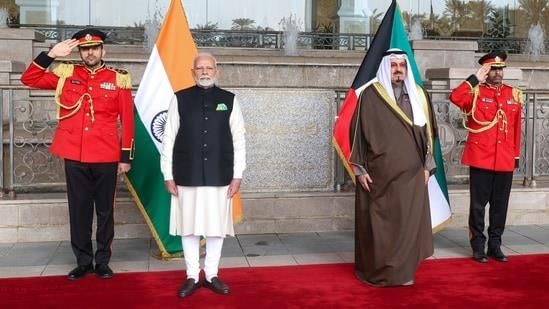 Why in News?
Why in News?
- During Prime Minister Narendra Modi's significant visit to Kuwait, India and Kuwait have upgraded their bilateral relations to a strategic partnership. This marks the second visit by an Indian Prime Minister since Indira Gandhi's trip in 1981. The visit highlights a renewed commitment to trade, defense, and broader cooperation between the two nations.
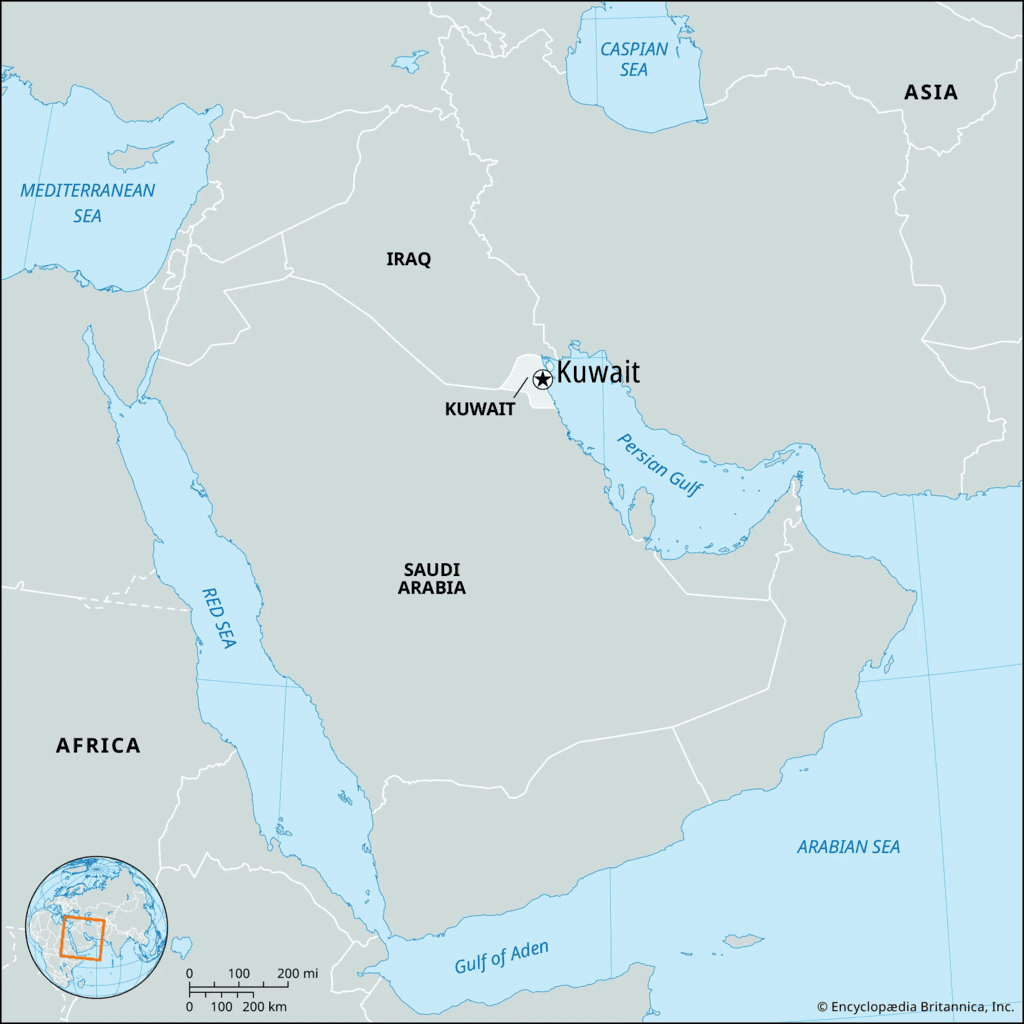
Key Takeaways
- PM Modi was awarded the Order of Mubarak Al Kabeer, the highest honor of Kuwait.
- India and Kuwait have established a Strategic Partnership, enhancing collaboration across various fields.
- An MoU on Defence Cooperation was signed, focusing on military exercises and training.
- A Cultural Exchange Programme for 2025-2029 was initiated alongside a sports cooperation agreement.
- A Joint Commission on Cooperation (JCC) was formed to oversee bilateral relations.
- Collaboration in technology and emerging sectors was emphasized, including AI and e-Governance.
- Energy cooperation was discussed, transitioning from a buyer-seller model to a comprehensive partnership.
- Kuwait's role in the International Solar Alliance (ISA) was acknowledged, with discussions on the India-GCC Free Trade Agreement.
Additional Details
- Historical Ties: The relationship between India and Kuwait dates back to pre-oil times, rooted in maritime trade. The Indian Rupee was the legal tender until 1961, indicating deep economic ties.
- Economic Partnership: Kuwait is a key trading partner for India, with bilateral trade reaching USD 10.47 billion in 2023-24. Kuwait also supplies 3% of India's crude oil needs.
- Indian Diaspora: Approximately 1 million Indians reside in Kuwait, significantly contributing to sectors like healthcare and engineering.
The visit by PM Modi to Kuwait signifies not only a strengthening of bilateral ties but also opens up new avenues for cooperation in various sectors, enhancing India's strategic interests in the Gulf region.
Quantum Satellite
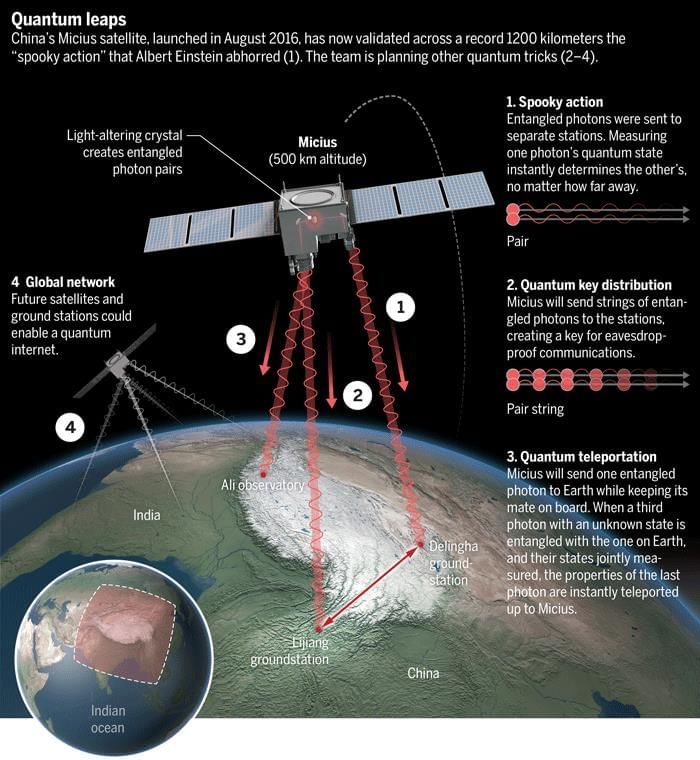 Why in News?
Why in News?
- India's National Quantum Mission (NQM) is set to launch a quantum satellite within the next 2-3 years, which aims to enhance secure communications by leveraging principles of quantum physics. This initiative positions India as a leader in next-generation technology.
Key Takeaways
- The National Quantum Mission focuses on advancing secure communications through quantum technologies.
- A quantum satellite utilizes quantum cryptography, particularly Quantum Key Distribution (QKD), to safeguard data transmission.
Additional Details
- What is a Quantum Satellite: A quantum satellite is a communications satellite that uses quantum physics to secure its signals, making it resistant to interception.
- Quantum Cryptography: This involves methods that utilize quantum mechanics to encrypt and transmit data. Classical methods, such as the Caesar cipher, are vulnerable to quantum computing attacks, whereas quantum encryption offers enhanced security through QKD.
- Quantum Measurement entails that when a quantum system (e.g., a photon) is measured, its state changes, enabling the detection of eavesdropping attempts.
- Global Developments: China has established the largest QKD network with three quantum satellites. India is progressing with its own quantum communication experiments, particularly from the Indian Astronomical Observatory in Hanle, Ladakh.
- The Indian Space Research Organisation (ISRO) has successfully demonstrated free-space quantum communication over distances of 300 meters.
- The United Nations has declared 2025 as the 'International Year of Quantum Science and Technology' to promote public awareness regarding the significance of quantum science.
The quantum satellite initiative under the NQM emphasizes the importance of quantum technologies in ensuring secure communications and enhancing India's technological capabilities.
Limitations of Quantum Key Distribution
- Technological Maturity: In India, the technology is still experimental, and large-scale commercial QKD networks are not yet viable.
- Infrastructure Costs: The implementation of QKD requires specialized hardware, which raises costs compared to traditional encryption.
- Integration Challenges: Merging QKD with existing communication frameworks and ensuring compatibility with classical systems is complex.
- Lack of Authentication: QKD does not reliably authenticate the source of a transmission, making it vulnerable to impersonation attacks.
What is the National Quantum Mission (NQM)?
- About: Launched in 2023 with an investment of Rs. 60,000 crore over a period from 2023-24 to 2030-31, the NQM aims to progress Quantum Technologies in India and establish the country as a global authority in Quantum Technologies and Applications (QTA).
- Objective: The mission seeks to develop quantum computers with 50-1000 physical qubits over 8 years and to establish satellite-based secure quantum communications across distances of 2000 km within India and internationally.
- Sectoral Impact: The mission is expected to significantly benefit sectors like communication, healthcare, financial services, and energy, with applications in drug design, space exploration, and banking security.
Way Forward
- Post-Quantum Cryptography: Experts suggest using post-quantum cryptography, which blends quantum-resistant algorithms with classical encryption to overcome QKD limitations.
- Quantum Authentication: Developing quantum authentication protocols is crucial for ensuring both encryption and identity verification, enhancing overall security.
- Miniaturisation: Creating smaller, energy-efficient quantum devices will enable broader access across various industries.
- International Collaboration: Cooperation on a global scale is necessary for establishing standardized and interoperable quantum communication networks, with India playing a pivotal role in influencing international standards.
The National Quantum Mission is poised to transform India's technological landscape, leveraging quantum advancements to secure communications and foster innovation across multiple sectors.
Sri Lankan President’s India Visit
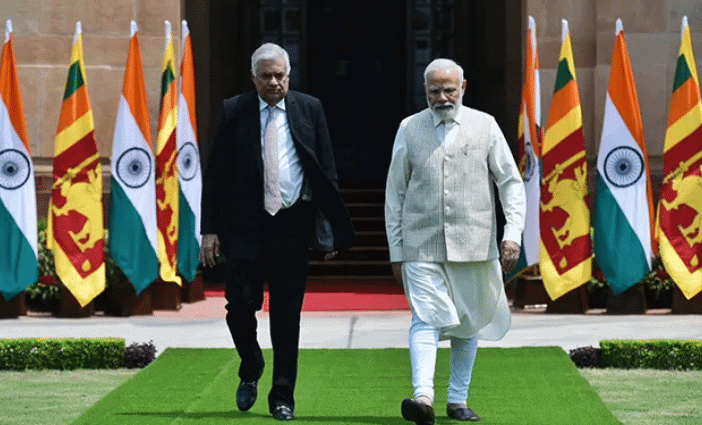
Why in News?
- Recently, the new President of Sri Lanka made his first visit to India, with a focus on enhancing trade, energy, and maritime cooperation. Discussions with Indian leaders emphasized Tamil aspirations, economic recovery, and countering Chinese influence, reinforcing India’s Neighbourhood First policy and SAGAR Vision.
Key Takeaways
- The visit resulted in discussions on economic and technology cooperation agreements.
- India agreed to promote trade settlements in Indian Rupee (INR) and Sri Lankan Rupee (LKR).
- Energy partnerships were established, including agreements for LNG supply and regional energy projects.
- Security cooperation, particularly in maritime security, was a key focus.
- India provided financial support during Sri Lanka’s economic crisis.
Additional Details
- Economic and Trade Agreements: Proposed Economic and Technology Cooperation Agreements (ETCAs) aim to integrate services and technology into trade relations. This includes training for 1,500 Sri Lankan civil servants.
- Energy Partnership: India will supply LNG to Sri Lanka and develop renewable energy projects, including offshore wind power and grid interconnections.
- Infrastructure and Connectivity: Initiatives include the resumption of ferry services and the ongoing development of Kankesanthurai port.
- Regional Security Cooperation: A commitment was made to deepen security cooperation, particularly in maritime security.
- Financial Support: India extended USD 4 billion in financial support for food, fuel, and medicines to stabilize Sri Lanka’s economy.
- Bilateral Cooperation in Global Forums: Sri Lanka sought India's support for its bid to join BRICS and in matters related to the United Nations Commission on the Limits of the Continental Shelf.
The visit marked a significant step towards strengthening bilateral relations between India and Sri Lanka, with mutual benefits expected in economic, energy, and security domains.
Areas of Cooperation Between India and Sri Lanka
- Economic Cooperation: India is Sri Lanka’s largest trade partner in SAARC, with bilateral trade reaching USD 5.5 billion in FY 2023-24. India exports essential goods while Sri Lanka benefits from the India-Sri Lanka Free Trade Agreement.
- Development Assistance: India has provided over USD 2 billion through Lines of Credit (LOCs), supporting key sectors such as railways, hospitals, and power transmission.
- Energy Collaboration: Renewable energy initiatives, including hybrid systems in Jaffna, highlight India's push for development in the region.
- Defence and Security: Joint military exercises and naval drills aim to strengthen defence ties, alongside support for counterterrorism and disaster management efforts.
- Cultural and Educational Exchange: Historical ties are reinforced through scholarship programs and restoration projects.
- Maritime Cooperation: Collaborative efforts address illegal fishing and sustainable resource management in the Indian Ocean.
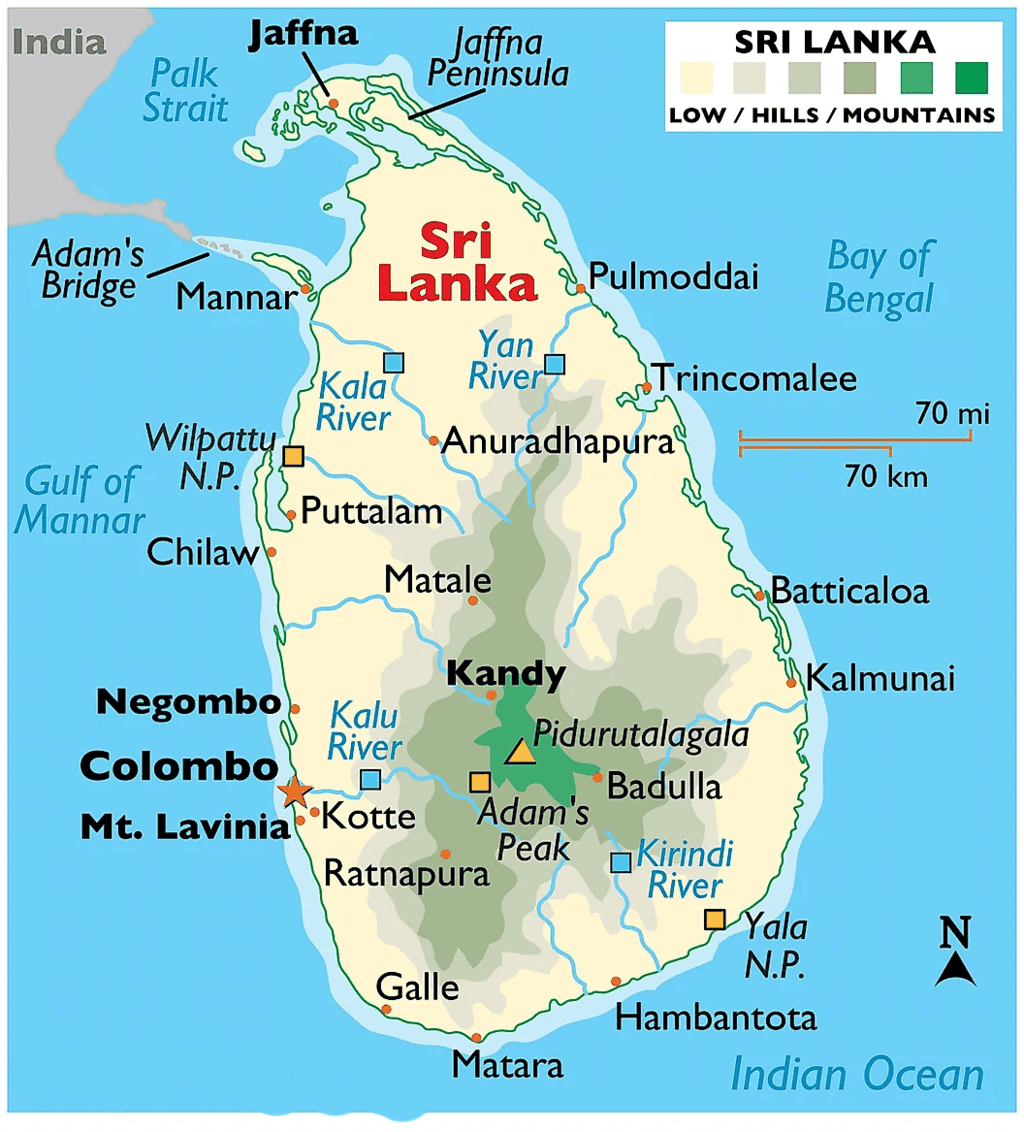
Challenges of Cooperation Between India and Sri Lanka
- Fishing Disputes: Tensions arise from Indian fishermen's bottom trawling in Sri Lankan waters, leading to arrests and fines.
- Katchatheevu Island Dispute: Ownership and use of Katchatheevu Island remain contentious, straining bilateral relations.
- Ethnic and Political Issues: India’s support for the Tamil population has faced resistance from certain political factions within Sri Lanka.
- Geopolitical Rivalries: China's increasing influence in Sri Lanka through infrastructure projects poses challenges to India’s strategic interests.
- Maritime Boundary Issues: The dispute over the Afanasy Nikitin Seamount could lead to diplomatic friction.
Way Forward
- Enhancing Dialogue: Strengthening diplomatic engagements is vital to address core issues like fishing rights and Tamil reconciliation.
- Economic Integration: Expanding trade agreements and infrastructure linkages will boost economic interdependence.
- Fisheries Management: Promoting sustainable fishing practices and joint initiatives can resolve conflicts while protecting marine ecosystems.
- Leveraging Development Assistance: India should focus on renewable energy and digital governance to support Sri Lanka’s development.
- Balancing Geopolitics: Counterbalancing Chinese influence through strategic investments and diplomatic outreach will ensure alignment with Sri Lanka’s long-term interests.
The visit and subsequent discussions signify a commitment to enhancing cooperation across multiple sectors, addressing challenges, and paving the way for a stronger partnership.
Mains Question:
- What are the key areas of economic cooperation and the main challenges in maritime cooperation between India and Sri Lanka?
Good Governance Day 2024
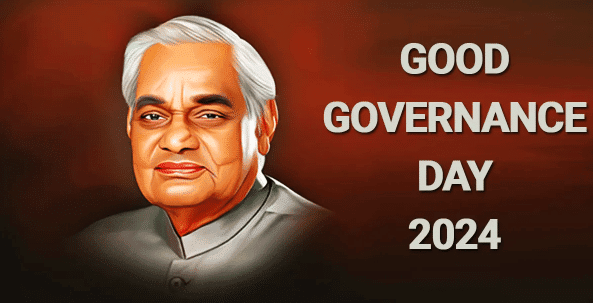
Why in News?
- Good Governance Day is celebrated on 25th December to raise awareness among citizens about government accountability and effective administration. The theme for 2024 is “India’s Path to a Viksit Bharat: Empowering Citizens through Good Governance and Digitalisation.” This observance was initiated in 2014 to honor the birth anniversary of former Prime Minister Atal Bihari Vajpayee, which coincides with the birth anniversary of Pt. Madan Mohan Malaviya.
Key Takeaways
- Good Governance Day promotes awareness of government accountability.
- The 2024 theme focuses on empowering citizens through digitalization.
- It honors Atal Bihari Vajpayee and Pt. Madan Mohan Malaviya.
Additional Details
Initiatives Launched on Good Governance Day 2024:
- New iGOT Karmayogi Dashboard: A tool for Ministry/Department/Organization (MDO) leaders to monitor progress and effectiveness.
- 1600 iGOT Karmayogi Course: Aims to foster a learning ecosystem for government employees, promoting continuous development.
- Viksit Panchayat Initiative: Strengthens the ability of Panchayati Raj Institutions (PRIs) to deliver quality services.
- CPGRAMS Annual Report, 2024: Highlights improvements in public service delivery through a robust grievance redressal system.
What is Good Governance?
- Good governance involves the decision-making process and the implementation of decisions essential for development.
- According to the World Bank, it is about how power is exercised in managing a country’s resources for development.
- Good governance is tested by its ability to uphold human rights across various domains.
Key Attributes:
- Good governance is participatory, accountable, transparent, responsive, effective, equitable, and follows the rule of law.
Significance of Good Governance:
- Economic growth through equal rights and protection in the workforce.
- Social development initiatives empower marginalized groups.
- Strengthening democracy through citizen engagement and e-governance.
- Reducing inequality with financial inclusion and guaranteed employment schemes.
Hurdles with Good Governance:
- Corruption, which costs India 0.5% of its GDP annually.
- Lack of accountability leading to diminished civic engagement.
- Criminalization of politics affecting justice and equal treatment.
Way Forward:
- Decentralization of power to local bodies for effective governance.
- Instilling ethical standards in public servants.
- Promoting gender equality for inclusive participation.
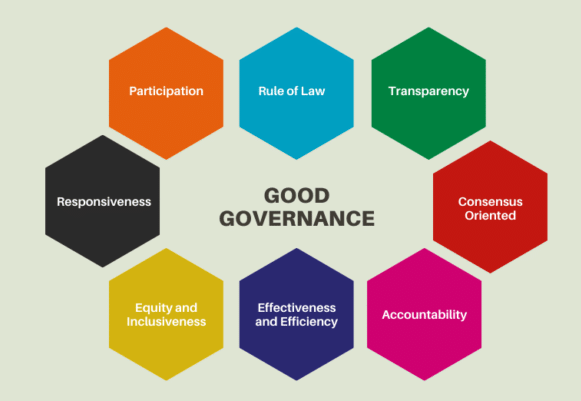
Good governance is essential for economic growth and social development in India. By addressing hurdles such as corruption and lack of accountability, and by implementing initiatives that promote inclusiveness and ethical practices, India can move towards better governance and enhanced citizen engagement.
PM Shram Yogi Maandhan Yojana
 Why in News?
Why in News?
- A recent report from the Parliamentary Standing Committee (PSC) has raised concerns regarding the underperformance of the Pradhan Mantri Shram Yogi Maandhan Yojana (PM-SMY), a pension initiative aimed at workers in the unorganised sector.
Key Takeaways
- The PM-SMY was launched in 2019 and is managed by the Ministry of Labour and Employment.
- It targets unorganised workers aged 18 to 40, with a monthly income of up to Rs 15,000.
- Contributions range from Rs 55 to Rs 200 per month, depending on the worker's entry age.
- The scheme promises a pension of Rs 3,000 per month after the worker reaches 60, with provisions for the spouse if the worker dies before that age.
- Enrollment has been significantly lower than expected, with only 5 million workers registered against a target of 100 million by 2023.
Additional Details
- Scheme Overview: The PM-SMY is a Central Sector Pension Scheme aimed at providing a safety net for unorganised workers, managed by the Life Insurance Corporation of India (LIC).
- Performance Issues: The scheme has faced challenges such as low enrollment rates and a reduction in government funding, with contributions halved from Rs 324.23 crore in FY 2021-22 to Rs 162.51 crore in FY 2023-24.
- Obstacles to Participation: Factors such as irregular income, the impact of Covid-19, and lack of awareness contribute to the low participation of unorganised workers.
- Recommendations for Improvement: Suggestions include expanding the entry age to 50, merging with other schemes for better coverage, utilizing the e-Shram database for enrollment, and launching awareness campaigns.
The PM Shram Yogi Maandhan Yojana is a crucial initiative designed to safeguard the livelihoods of unorganised workers. However, significant improvements are needed to enhance its effectiveness and reach a larger segment of the workforce.
|
39 videos|4346 docs|920 tests
|
FAQs on Weekly Current Affairs (22nd to 31st December 2024) Part - 1 - Current Affairs & Hindu Analysis: Daily, Weekly & Monthly - UPSC
| 1. What are the key findings of the 18th India State of Forest Report 2023? |  |
| 2. How is India planning to enhance its Farmer Producer Organizations (FPOs) on a global scale? |  |
| 3. What were the main objectives of India's Prime Minister's visit to Kuwait? |  |
| 4. What is the significance of the Quantum Satellite project in India? |  |
| 5. What initiatives are associated with the PM Shram Yogi Maandhan Yojana? |  |
|
39 videos|4346 docs|920 tests
|



















